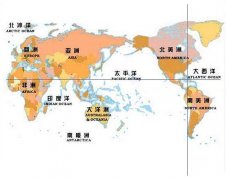High-quality coffee raw beans what kind of raw beans are high-quality raw beans?
What kind of raw beans are high quality raw beans? First look at the surface of the beans, fresh high-quality raw beans, shiny surface, in addition, the treatment of good raw beans, uniform color, uneven surface color can not be called good beans, must choose uniform color when purchasing. Secondly, the particle size is consistent, which is also evidence of good quality management. Make sure the particle size is consistent when purchasing. Uniform and neat coffee beans can achieve consistent roasting effect; otherwise, some are too deep and bitter, and some are too shallow and sour, which will affect the overall taste of roasted coffee beans.
Green beans are divided into several grades according to quality standards, which vary from place to place and are basically determined according to size and shape. The higher the grade, the better the quality. At present, because the domestic green coffee bean market has just started, the coffee beans sold are mainly low-grade beans. The green beans we get usually have many flaws. Defective coffee beans can be quite harmful, including:
Mutant beans:
Not flat beans are not garden beans, due to the development of abnormal reasons, raw beans in the shell when the central part of the broken. The beans tend to be uneven when baked.
Fermented beans/black beans:
During processing or washing, beans ferment internally. Fermented sour.
Unripe beans/white dead beans:
Coffee cherries are harvested before they are fully ripe. The beans are ivory in color and green in taste when baked.
Mildew beans:
Moist, rain, mold breeding during processing and transportation. As long as there is a bean mold, it will soon spread to others, be sure to pay attention.
Worm-eaten beans:
Worn by a pest called a fruit beetle, the beans have insect eyes that give coffee an unpleasant smell.
Dry fruit:
with the outer skin entering the drying process. In the non-washing process, the green beans can be removed from the shell, but in the washing process, this state becomes defective beans.
Heterogeneous beans:
For example, Robstar mixed in Arabica and flat beans mixed in garden beans.
Small sandstone:
Easy to break the bean grinder, more extensive sun can be found. In the selection of time we put beans spread out in sufficient light, with both hands side pick edge efficiency is higher. Basically, coffee beans that seem to feel uncomfortable can be picked out. After selection, the beans will bake more neatly and taste more pure. If too many unexpected factors are mixed, it is impossible to judge the true taste of itself. Ordinary coffee beans of general commercial grade can also reach very high and expensive grades, even fine coffee levels, through their own selection.
Important Notice :
前街咖啡 FrontStreet Coffee has moved to new addredd:
FrontStreet Coffee Address: 315,Donghua East Road,GuangZhou
Tel:020 38364473
- Prev

Cuba Coffee Coffee Crystal Mountain Coffee
Flavor and taste characteristics: full of particles, uniform taste, tobacco flavor the Republic of Cuba is located in the West Indies, with a detached and primitive natural environment, the beautiful Caribbean Sea and the world-famous Crystal Mountain Coffee. In 1748, coffee was introduced into Cuba from Domiga, and Cuba began to grow coffee ever since. The land in Cuba is fertile, the climate is humid, and Rain Water is abundant.
- Next

Asian Indonesian boutique coffee Sumatra coffee
Sumatran Coffee and low Sumatra Coffee description: this coffee has earthy aromas and mysteries as well as an unusually strong flavor; it has a thick, deep earthy aroma. Processing: semi-washing method. Location: Sumatra is one of the largest islands in Indonesia. Indonesia is an island country in Southeast Asia made up of thousands of islands.
Related
- Guji coffee producing area of Guji, Ethiopia: Humbela, Shakiso, Wulaga
- What is the most expensive variety of Qiloso in BOP multi-variety group?
- How to store the coffee beans bought home?
- Why are Yemeni coffee beans so rare now?
- Ethiopian Sidamo all Red Fruit Sun Sun Santa Vini Coffee beans
- SOE is mostly sour? What does it mean? Is it a single bean? what's the difference between it and Italian blending?
- Is Italian coffee beans suitable for making hand-brewed coffee?
- How to choose coffee beans when making cold coffee? What kind of coffee beans are suitable for making cold coffee?
- Just entered the pit to make coffee, what kind of coffee beans should be chosen?
- Can only Japan buy real Blue Mountain Coffee? What are authentic Jamaican Blue Mountain coffee beans?

